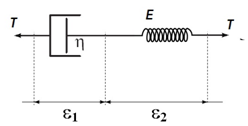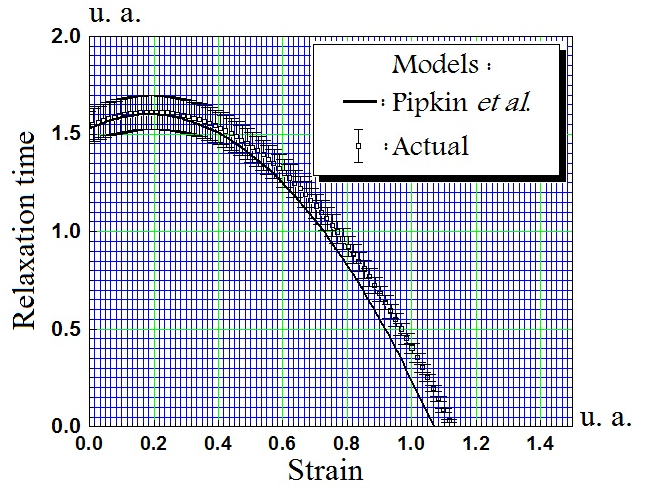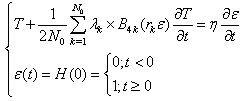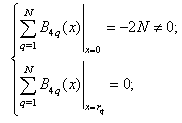| [1] | J.C. Maxwell, On the dynamical theory of gases, Philosophical Transactions of the Royal Society London A157 (1866) 26-78. |
| [2] | K.R. Rajagopal, A.R. Srinivasa, A thermodynamic framework for rate type fluid models, Journal of Non-Newtonian Fluid Mechanics 88 (2000) 207-227. |
| [3] | D.R. Bland, Theory of Linear Viscoelasticity, Pergammon Press, Oxford, 1960. |
| [4] | J.D. Ferry, Viscoelastic Properties of Polymers, third ed., John Wiley & Sons, New York, 1980. |
| [5] | I.J. Rao, K.R. Rajagopal, On a new interpretation of the classical Maxwell model, Mechanics Research Communications 34 (2007) 509-514. |
| [6] | R.G. Larson, S.J.Muller, E.S.G. Shaqfeh, The effect of fluid rheology on the elastic Taylor–Couette instability, J.Non-Newt.Fluid Mech. 51 (1994) 195-225. |
| [7] | R.A. Keiller, Numerical instability of time-dependent flows, J. Non-Newt. Fluid Mech. 43 (1992) 229-246. |
| [8] | V.A. Gorodtsov, A.I. Leonov, On a linear instability of a plane parallel Couette flow of viscoelastic fluid, J. Appl. Math.Mech. 31 (1967) 310-319. |
| [9] | J. Málek, K.R. Rajagopal, A thermodynamic framework for a mixture of two liquids.Nonlinear Anal.-Real World Appl. 9 (2008), 1649-1660. |
| [10] | C.W. Macosko. Rheology: Principles, Measurements, and Applications. Wiley-VCH, NewYork, USA, 1994. |
| [11] | A. C. Pipkin, T. G. Rooers, A nonlinear integral representation for viscoelastic behaviour, J. Mech. Phys. Solids 16 (1968) 59-63 |
| [12] | J. Ghanouchi, H. Labiadh and K. Boubaker, An attempt to solve the heat transfert equation in a model of pyrolysis spray using 4q-order m-Boubaker polynomials Int. J. of Heat and Technology, 26 (2008) 49-53 |
| [13] | S. Slama, M. Bouhafs and K. B. Ben Mahmoud,A Boubaker Polynomials Solution to Heat Equation for Monitoring A3 Point Evolution During Resistance Spot Welding, International J. of Heat and Techn., 2008, 26(2), 141-146. |
| [14] | T. Ghrib, K. Boubaker and M. Bouhafs, Investigation of thermal diffusivity-microhardness correlation extended to surface-nitrured steel using Boubaker polynomials expansion, Modern Physics Letters B, 22(2008) 2893-2907 |
| [15] | S. Fridjine, K.B. Ben Mahmoud, M. Amlouk, M. Bouhafs, A study of sulfur/selenium substitution effects on physical and mechanical properties of vacuum-grown ZnS1−xSex compounds using Boubaker polynomials expansion scheme (BPES),J. of Alloys and Comp., 479 (2009) (1-2), 457-461 |
| [16] | C. Khélia, K. Boubaker, T. Ben Nasrallah, M. Amlouk, S. Belgacem, Morphological and thermal properties of β-SnS2 sprayed thin films using Boubaker polynomials expansion, Journal of Alloys and Compounds, 477 (2009) (1-2), 461-467 |
| [17] | S. Tabatabaei, T. Zhao, , O. Awojoyogbe, F. Moses, Cut-off cooling velocity profiling inside a keyhole model using the Boubaker polynomials expansion scheme, Int.J. Heat Mass Transfer, 45 (2009) 1247-1255. |
| [18] | A. Belhadj, O. Onyango, N. Rozibaeva, Boubaker Polynomials Expansion Scheme-Related Heat Transfer Investigation Inside Keyhole Model , J. Thermophys. Heat Transf., 23 (2009) 639-642. |
| [19] | P. Barry, A. Hennessy, Meixner-Type results for Riordan arrays and associated integer sequences, section 6: The Boubaker polynomials, J. of Integer Seq., 13 (2010) 1-34. |
| [20] | M. Benhaliliba, Benouis, C.E., Boubaker, K., Amlouk M., Amlouk, A., A New Guide To Thermally Optimized Doped Oxides Monolayer Spray-grown Solar Cells: The Amlouk-boubaker Optothermal Expansivity ψab in the book : Solar Cells - New Aspects and Solutions, Edited by: Leonid A. Kosyachenko,[ISBN 978-953-307-761-1], (2011) 27-41. |
| [21] | H. Rahmanov, A Solution to the non Linear Korteweg-De-Vries Equation in the Particular Case Dispersion-Adsorption Problem in Porous Media Using the (BPES), Studies in Nonlinear Sciences, 2 (1) (2011) 46-49. |
| [22] | A.Schmidt, L.Gaul, FE implementation of viscoelastic constitutive stress-strain relations involving fractional time derivatives. In: Constitutive Models for Rubber II. A.A. Balkema Publishers, Tokyo, 2001, 79-89. |
| [23] | A.Schmidt, L.Gaul, On the numerical evaluation of fractional derivatives in multi-degree-of-freedom systems. Signal Processing 86(10), 2006, pp. 2592–2601. |
| [24] | K. B. Oldham, J. Spanier, The Fractional Calculus. Academic Press, New York and London, 1974. |
| [25] | J. Padovan, Computational algorithms for FE formulations involving fractional oper., Comp. Mech.2(1987) 271-287. |
| [26] | S. J. Singh, K. Chatterjee, Galerkin Projections and Finite Elements for Fractional Order Derivatives.Nonlinear Dynamics 45 (1-2) (2006), 183-206. |
| [27] | L. Yuan, O. Agrawal, A Numerical Scheme for Dynamic Systems Containing Fractional Derivatives.Journal of Vibration and Acoustics, 124 (2002) 321-324. |
| [28] | K.R. Rajagopal, On Implicit constitutive Theories, Applications of Mathematics 28 (2003) 279-319. |
| [29] | K.R. Rajagopal, Elasticity of Elasticity, Zeitschrift fur Angewandte Mathematik und Physik (2007). |
| [30] | K.R. Rajagopal, A.R. Srinivasa, On the response of non-dissipative solids, Proceedings of the Royal Society A-Mathematical Phys. and Engin. Sci. 463 (2007) 357-367. |
| [31] | K.R. Rajagopal, On implicit constitutive theories for fluids, Journal of Fluid Mechanics 550 (2006) 243-249. |
| [32] | D. Quemada. Rheological modelling of complex fluids. I. The concept of effective volume fraction revisited. The European Physical J. Applied Physics,1(1998)119-127. |
| [33] | D. Quemada, Rheological modelling of complex fluids: II. Shear thickening behavior due to shear induced flocculation. The European Physical Journal Applied Physics, 2 (1998) 175-181 doi:10.1051/epjap:1998170. |
| [34] | D. Quemada, Rheological modeling of complex fluids: III. Dilatant behavior of stabilized suspensions. The European Physical J. Applied Physics, 3 (1998), 309-320 D. Quemada, Rheological modelling of complex fluids: IV: Thixotropic and “thixoelastic” behaviour. The European Physical J. Applied Physics, 5 (1999) 191-207. |
| [35] | H. Marzougui, H. Saadouli, H. Khlifi and T. Lili, Numerical simulation of compressible turbulent flow using algebraic Reynolds stress model. The European Physical Journal Applied Physics, 35 , (2006) 69-74 |
| [36] | C. Bachelet, Ph. Dantan, P. Flaud Indirect on-line determination of the rheological behavior of a power law fluid based on numerical flow simulations. The European Physical Journal Applied Physics, 25 , (2004), 209-217. |


 is given by:
is given by:
 and
and  are the elongations, in the dashpot and spring respectively. The stress in the dashpot and spring, respectively
are the elongations, in the dashpot and spring respectively. The stress in the dashpot and spring, respectively  and
and  , verify the disposition-linked relation:
, verify the disposition-linked relation:


 denotes, in the earliest model, a material constant that has the units of time, or the so-called ‘‘relaxation time”.Maxwell original model is based on the idea of linear viscoelasticity, which assumes that for small strains, the relaxation modulus is independent of the strain but only depends on the elapsed time. For quantifying this dependence, Macosko[10] defined the relaxation modulus
denotes, in the earliest model, a material constant that has the units of time, or the so-called ‘‘relaxation time”.Maxwell original model is based on the idea of linear viscoelasticity, which assumes that for small strains, the relaxation modulus is independent of the strain but only depends on the elapsed time. For quantifying this dependence, Macosko[10] defined the relaxation modulus  as the ratio between the stress and the strain:
as the ratio between the stress and the strain:


 denotes, in the earliest model, a material constant that has the units of time. In the actual model, the relaxation time is considered as a strain-dependent variable. This configuration has been evoked earlier by Pipkin et al.[11] through the single step strain history model , express by:
denotes, in the earliest model, a material constant that has the units of time. In the actual model, the relaxation time is considered as a strain-dependent variable. This configuration has been evoked earlier by Pipkin et al.[11] through the single step strain history model , express by:
 denotes the relaxation time estimator
denotes the relaxation time estimator  and
and  are constants,
are constants,  is the strain dependent tensorial relaxation function and
is the strain dependent tensorial relaxation function and  is the deformation gradient tensor. In the actual model, a polynomial scheme is proposed for modeling both relaxation time
is the deformation gradient tensor. In the actual model, a polynomial scheme is proposed for modeling both relaxation time  and stress
and stress  in respect to the inherent boundary conditions imposed by Eq. 8.
in respect to the inherent boundary conditions imposed by Eq. 8.

 are the 4k-order Boubaker polynomials,
are the 4k-order Boubaker polynomials,  are
are  minimal positive roots,
minimal positive roots,  is a prefixed integer,
is a prefixed integer,  are unknown pondering real coefficients. Figure 2 presents relaxation time strain-dependent variations for both actual and single step strain history[11] models.
are unknown pondering real coefficients. Figure 2 presents relaxation time strain-dependent variations for both actual and single step strain history[11] models.
 excitation. Consequently, it comes for Eq. (9) that:
excitation. Consequently, it comes for Eq. (9) that:

 denotes the Dirac delta function. The BPES protocol ensures the validity of the related boundary conditions expressed through biological conditions, regardless main equation features. In fact, thanks to Boubaker polynomials first derivatives properties:
denotes the Dirac delta function. The BPES protocol ensures the validity of the related boundary conditions expressed through biological conditions, regardless main equation features. In fact, thanks to Boubaker polynomials first derivatives properties:

 boundary conditions are inherently verified.The BPES solution is obtained through four steps:√ Determining the set of the pondering real coefficients,
boundary conditions are inherently verified.The BPES solution is obtained through four steps:√ Determining the set of the pondering real coefficients,  which optimize the fitting of Fig. 2.√ Integrating, for a given value of
which optimize the fitting of Fig. 2.√ Integrating, for a given value of , the whole expressions given by Eq. (12) along time domain.√ Writing the time dependent solution for stress as a sum of solutions to the
, the whole expressions given by Eq. (12) along time domain.√ Writing the time dependent solution for stress as a sum of solutions to the  elementary k-indexed equations:
elementary k-indexed equations:  √ Incrementing
√ Incrementing .√ Testing the convergence of the coefficients
.√ Testing the convergence of the coefficients  .
.

 . In fact case when the
. In fact case when the  decreases, tends to zero, the results for Newtonian fluids[32-37] is recovered.
decreases, tends to zero, the results for Newtonian fluids[32-37] is recovered.  Abstract
Abstract Reference
Reference Full-Text PDF
Full-Text PDF Full-Text HTML
Full-Text HTML